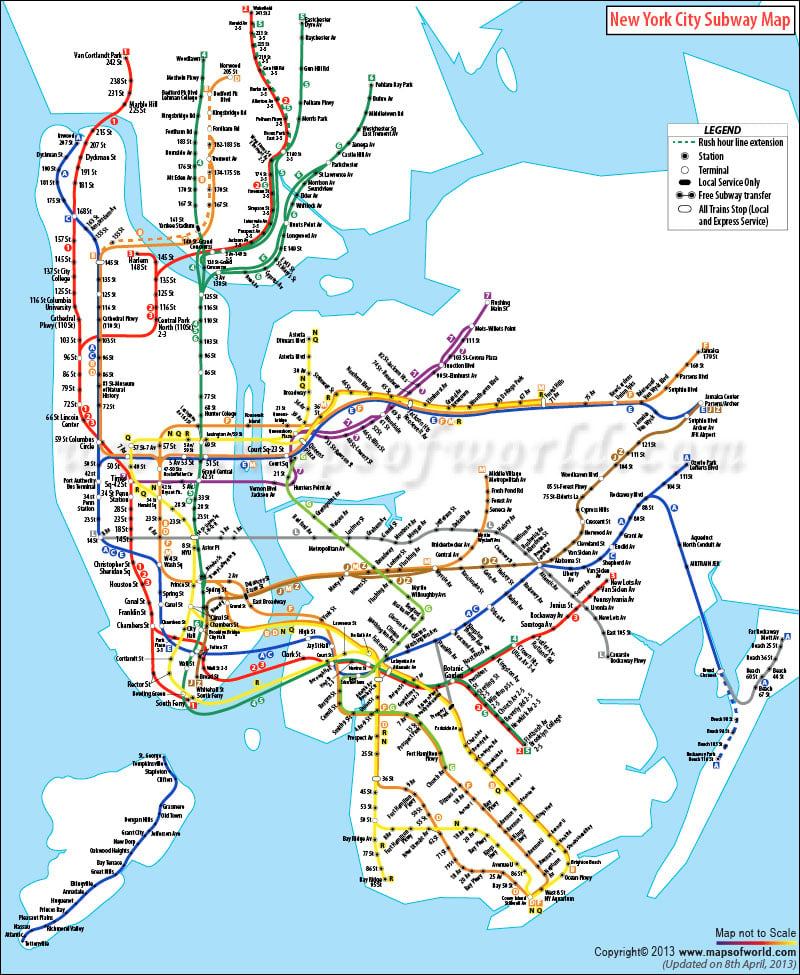NYC Subway Facts |
| Opening Year | 1904 |
| Stations | 469 |
| Routes | 24 |
| Track Length | 662 Miles |
| Ridership | 2.4b/ year |
| Operates | 24*7 |
| First Air-Conditioned Subway Cars Introduced | 1967 |
| Longest Route | 31 Miles |
| Longest Gap Between Stations | 3.5 Miles |
New York City Subway :
From New-York-based sitcom episodes to popular music albums, the New York City Subway is as prevalent in American culture as The Big Apple itself.
The Metropolitan Transportation Authority (MTA), which operates the NYC Subway, is North America’s largest transportation network. The New York City Subway is a system of underground and overground trains that provides the city with a well-integrated mass rapid transport system, which is the largest in America. Opened in 1904, the NYC Subway now extends across all boroughs of New York. Except for the G train, all subway routes serve Manhattan.
It is one of the world’s oldest subway systems and also has the largest number of operational stations. With 469 stations along 24 routes on the 662-mile-long track, the annual ridership of the subway is more than 2.4 billion. About 60% of the subway system runs underground and 40% runs on elevated or surface tracks. The seventh-busiest rapid transit rail system in the world runs for 24 hours a day. The system also has the most number of subway stations in the world.
Usually, a New York City Subway train has 8 to 11 cars, with a train ranging from 46 m to 180 m in length. The system provides employment to about 47,880 people. For a ride on the subway, travelers need to buy a MetroCard. Regular commuters can purchase 7-day and 30-day cards. The MTA also offers lower fares for differently abled people and senior citizens.

